When you think tea ceremony, I’m sure the Land of the Rising Sun first comes into mind. Well, let me tell ya, Japan isn’t the only country who has the art of the tea ceremony down. Just across the sea, lies the land of the Morning Calm and they played with tea for many different occasions. Fully enjoying Korea culture is all about atmosphere so if you want to experience a beautiful traditional Korean tea ceremony for free, check out Gyeongbokgung Palace.
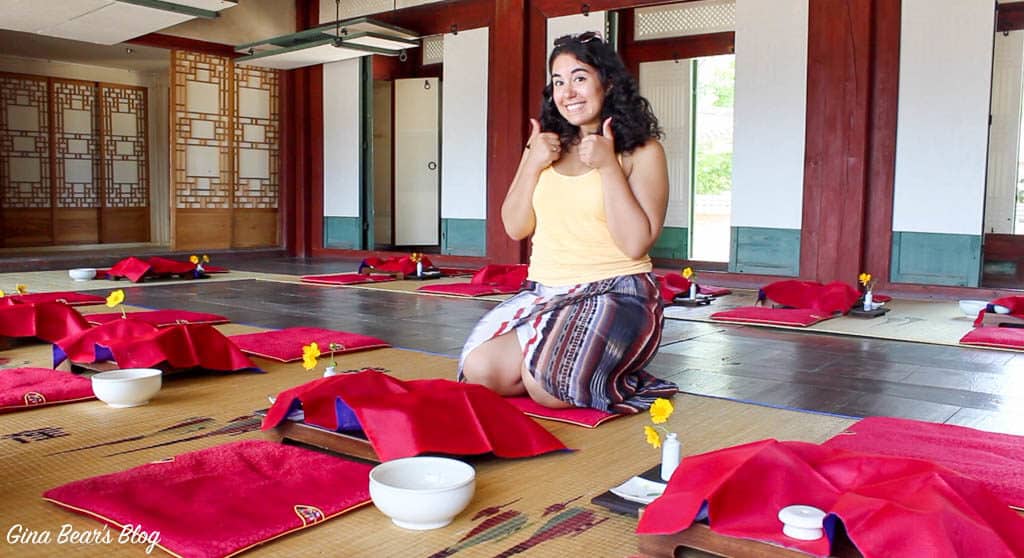
A Little Bit of History
Everyone knows green tea has many of health benefits including anti-aging, antibacterial, and prevention of adults diseases such as obesity and cancer. Did you know that according to the latest studies, green tea also can remove heavy metals and environmental hormones from the body? Be right back, I’m about to sip all that tea. For all you millennials, now you know this is a vegan, environmental, health friendly activity let’s talk about Jagyeongjeon Hall.
This place was dedicated to Queen Sinjeong, mother of King Heonjong. Now that’s what I call some appreciation for a strong lady who brought him into the world. Anyway, this hall is an exclusive ladies’ room decorated with patterns that signify good luck, long life and a protective charm.
Every tea ceremony performed is called Gunjung Darye according to the book of the Five Rites. The Jose Dynasty contains 2,100 historical records of a tea ceremony taking place. Unfortunately, it lost popularity during this time because liquor is quicker, but it was still an integral part of formalities.
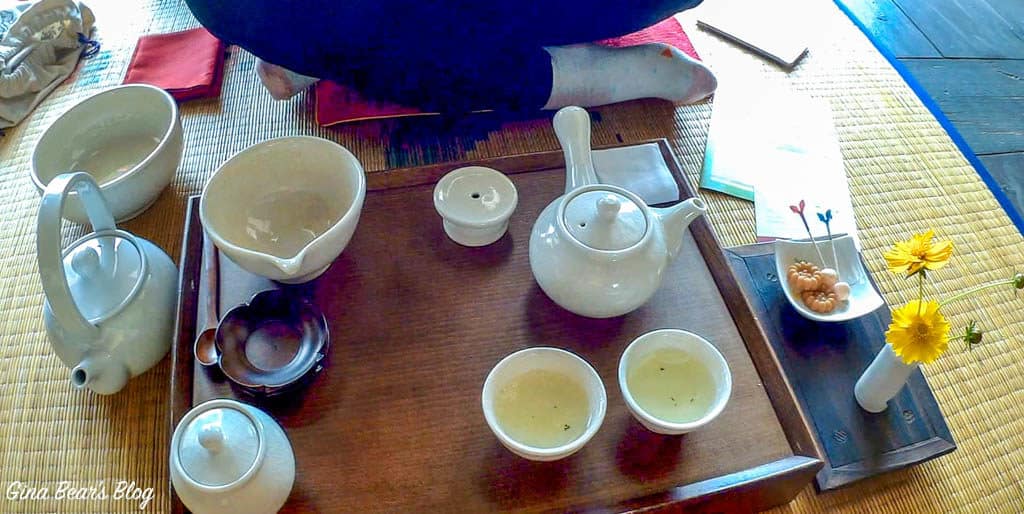
About the Tea Ceremony Experience
Having a free royal experience has never been so fun and you get to recreate at Jagyeongjeon Hall. The tea ceremony is conducted in Korean only, but don’t let this deter you from having a wonderful experience. When in Korea, do as the Koreans do and copy them. Whenever I didn’t understand something, I watched and then repeated exactly what I saw. The tea master was very mesmerizing because she is very well spoken, elegant and graceful. I couldn’t help thinking, “I want to be that bad ass when I’m her age!” During the ceremony they will teach you how to bow, how to sit up straight, prepare the tea, consume it, and then conclude the ceremony.
The ceremony is done in pairs. One person will prepare the tea (the host) and the other will consume it first. If you want to go through the ceremony sit on the outside. The host will brew the tea politely and serve it. As a guest, you will hold the teacup with both hands and gently take three sips to savor the scent, taste, and color of the tea.
You should wear socks and dress appropriately. Don’t wear anything too revealing like you’re going out to the night club and you should be fine. Showing shoulders in Korea is usually a big no-no, so I brought my jean jacket, but I didn’t need to wear it because the staff didn’t really care since I was a foreigner.
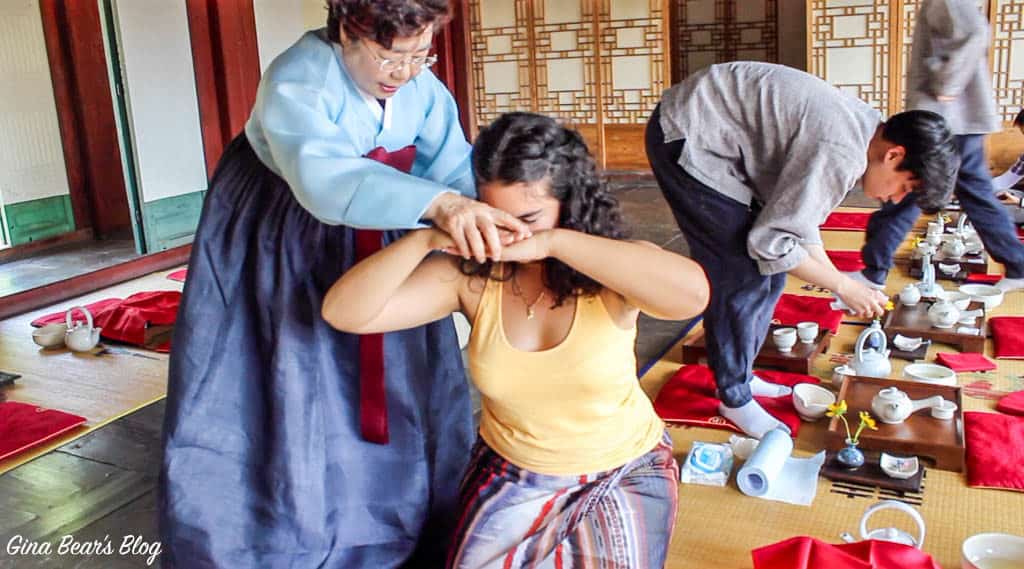
Make a Reservation
They have this several times a year from May-July and then September-October. Since the tea ceremony is super popular, you should make a reservation in advance to secure your seat. The tea ceremony takes place at 1pm and 2:30pm every weekend. The earlier reservation provides a more intimate setting because only 10 people are allowed. The 2:30pm reservation is for 20 people. In my experience, a lot of people miss out on their reservations or just don’t show up so if you go early, your chance are pretty good you’ll be allowed to participate.

Cost
To partake in the ceremony is free; however, you have to pay the 3,000 won entrance fee to enter Gyeongbokgung Palace. Alternatively, you can rent a hanbok at Hanbok Nam and enter the palace for free as your experience a Korean tea ceremony.
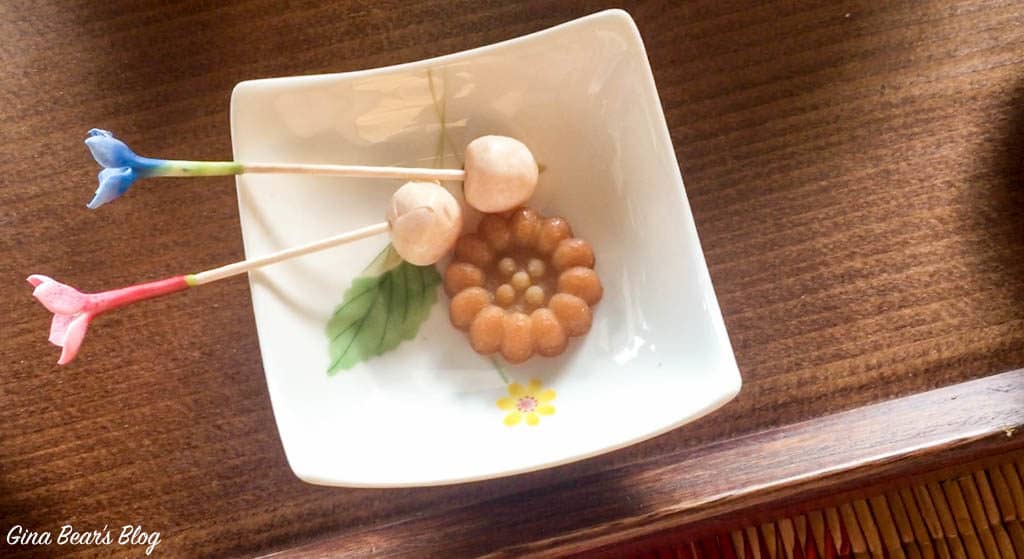
How to Get There
Get off at Gyeongbokgung Station Line 3 exit 5. Jagyeongjeon Hall is very easy to find, but if you get lost, the staff at Gyeongbokgung are amazing and will direct you to it.
Address: 161, Sajik-ro, Jongno-gu, Seoul
서울특별시 종로구 삼청로 37 지번 서울특별시 종로구 세종로 1-1 경복궁 자경전
Phone Number: 02-3210-1645 extension 6

Make the most of your time while here and really get to know the culture. When you try something new or do something wonderful, you’ll get a sense of belonging and love for the country you’re staying in. Even though I was confused throughout most of the ceremony, I had an exquisite time. Besides, for only a 3,000 won admission, you can’t go wrong.

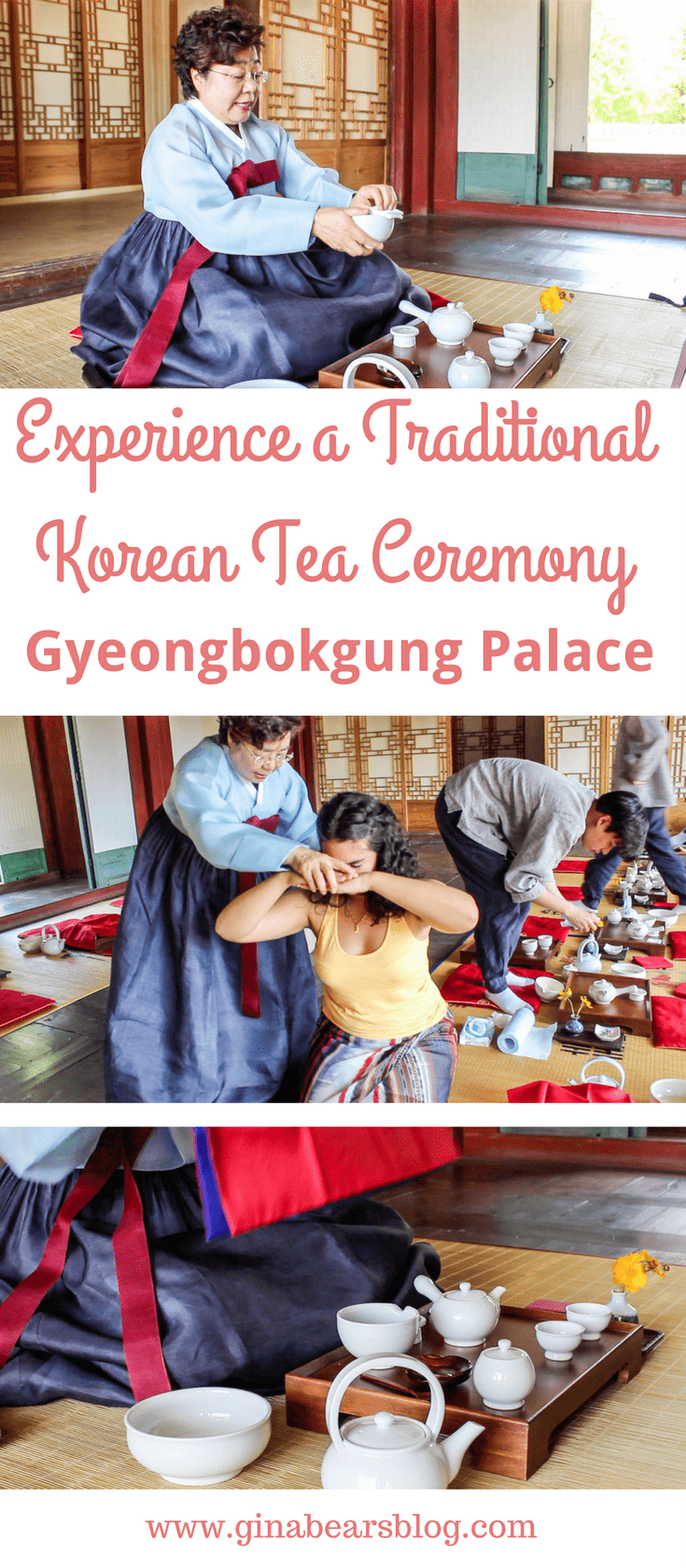
This post contains affiliate links which means at no additional cost to you, I make a small commission to help keep Gina Bear’s Blog running. Thanks for your support!
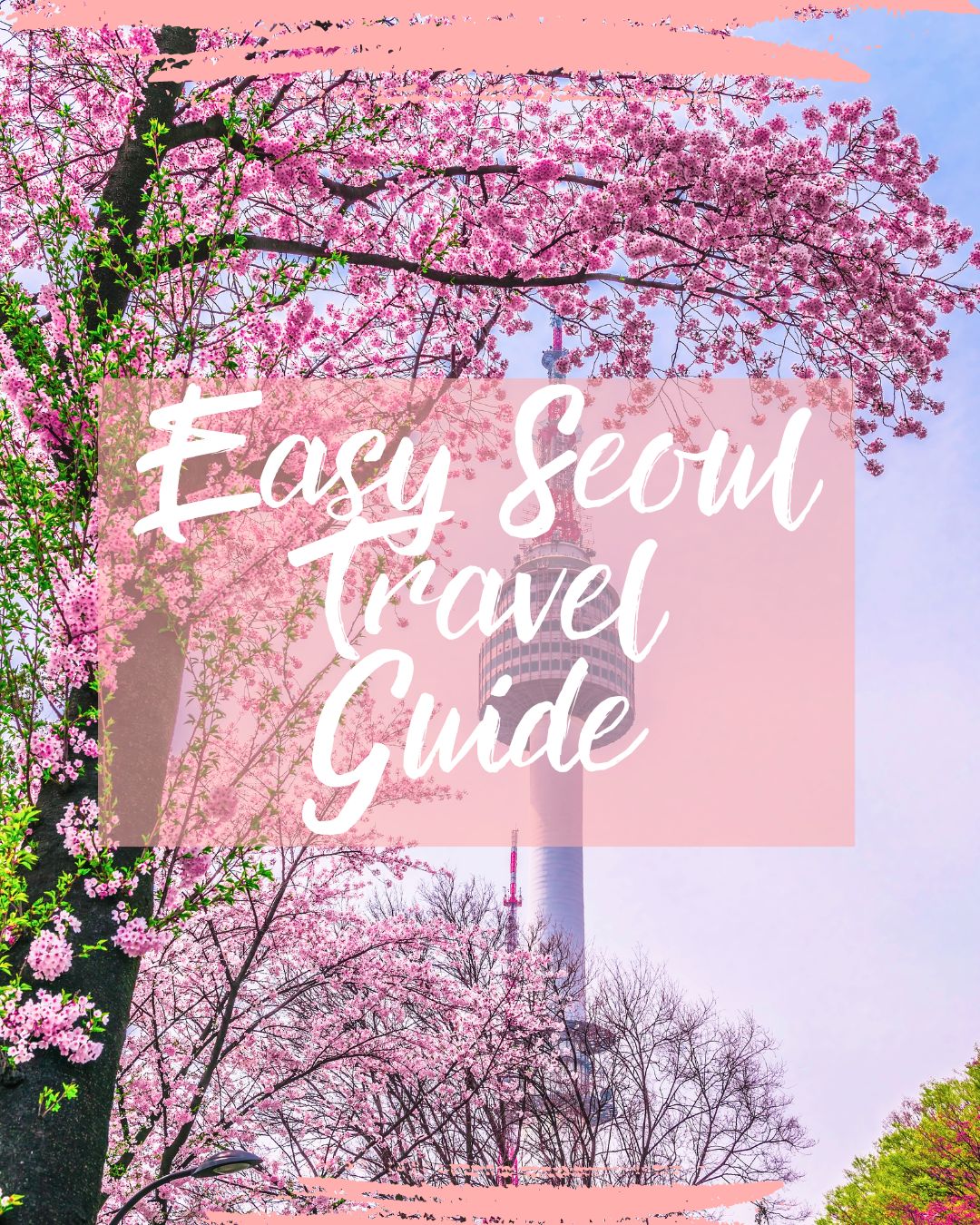
Free Seoul E-Book
Do you love South Korea?
Enter your name and email address and click the button below to receive your Easy Seoul Travel Guide so you can travel like a local!

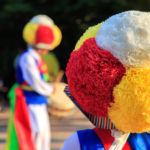
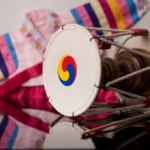
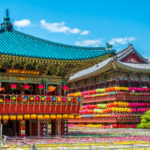
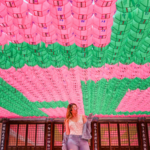
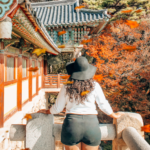
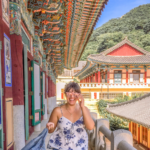
As a passionate lover of tea, I would definitely love to attend this ceremony and enjoy the tea! This seems like an ultimate Korean experience, right?
Most definitely an amazing Korean experience. You’ll get to see how they got down in the Joseon era and make or enjoy the tea. I really loved this and it’s great for tourists.
I want to tell you that I lovvvvveeeee your blog! I am going to korea the first week of December . I am getting excited about my trip because of your blog about korea! Is the weather usually cold around December or is it autumn ?
Thanks so much for reading and commenting, Ann! I really appreciate it. I hope that my blog can help you with your trip. In December, it’s pretty cold, so I would recommend bringing a winter coat.
I never thought there could be a ‘tea ceremony’. This is really interesting. I don’t drink tea but everyone in my family is like addicted to it. So, when I ever get to visit here, I would love to take my family for this experience. Thanks for sharing Gina!
It looks like a beautiful ritual. You mention it takes place in pairs – do you take turns as host/guest ?
I must have missed the memo about green tea curing obesity – but better late than never, I’m SO a new convert!! And while the chance of finding a Korean tea ceremony to get me started downunder is VERY remote, there’s no reason not to inject tradition and ritual into tea drinking. Especially now I’ve seen how it’s really done. Fascinating!
I’m a tea lover, I guess in that sense I’m truly Asian 🙂
This sounds like a very interesting experience and even more so as it is free to join. Okay, not really, but as the Palace is worth seeing it is kind of free, right?
The only thing I’m still asking myself is: What is now the difference to Japanese tea ceremonies? Do you know?
What an interesting read. I love Korea, it has so much to offer in terms of traditional and ceremonial emgagemnt for its visitors. You’d have been more pretty if you wore a hanbok. I can’t wait to visit Korea, wear hanboks and partake in other cultudal activities like Tea celebration
hi, How do i book this ceremony?
any idea if is it available in NOV too?
Thank you.
If you read the post, there’s links on Naver on how to book it. In addition, I also mentioned it’s available Sept-November.